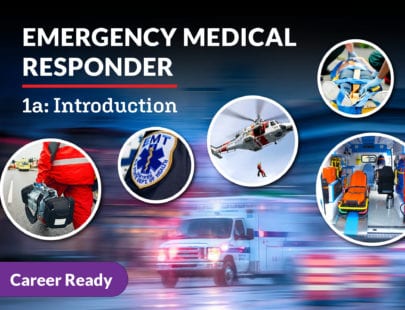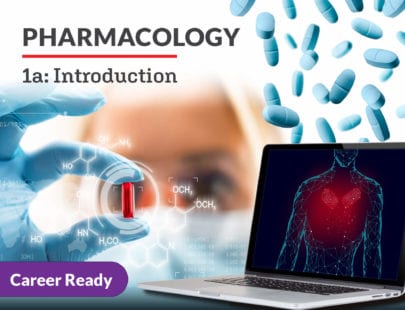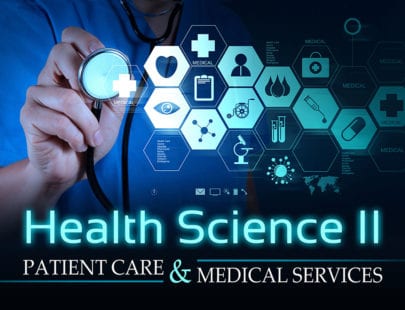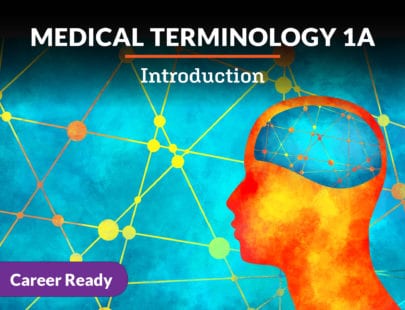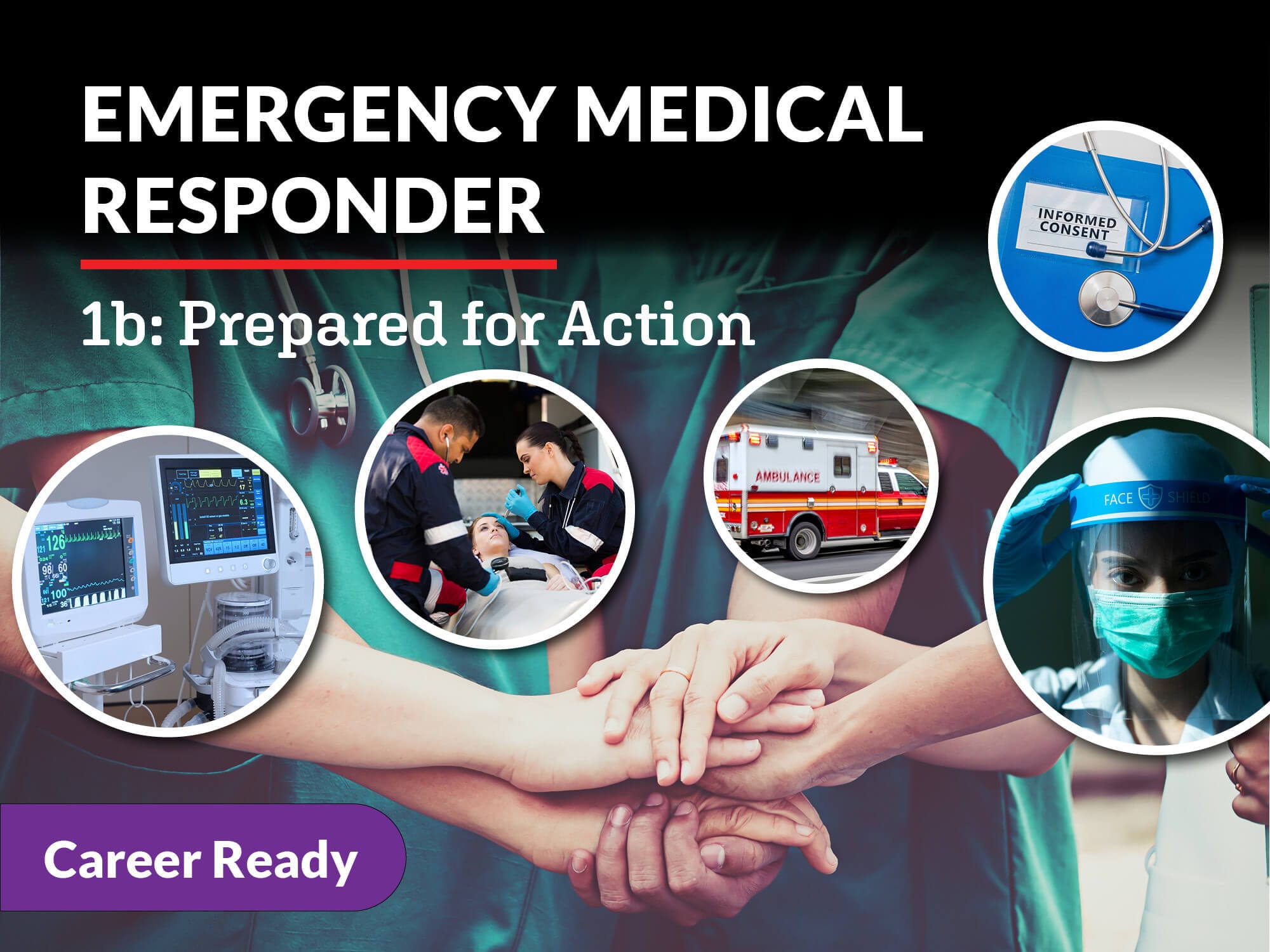
Emergency Medical Responder 1b: Prepared for Action
Being an emergency medical responder is dynamic and challenging. EMRs are first responders who are prepared for action! Explore how to care for diverse patients and in unique and even difficult situations. From advanced trauma to childbirth, from mass casualties to special conditions. EMRs are trained to care for, treat, move, and transport patients in various situations and play a vital role as part of an EMS response team.
Units at a Glance
Unit 1: Pediatric Patients
Being an emergency medical responder is always exciting and challenging, but what happens when you arrive on the scene to find a child patient? These situations pose their own unique sets of obstacles. We’ll begin by learning about the anatomical and physiological differences between children and adults. Then, we’ll look at assessment and treatment techniques for child patients. Pediatric illnesses and specific emergencies are also covered to provide you with a solid foundation for working with these patients.
What will you learn in this unit?
- Assess child patients of all ages
- Provide pediatric patients with treatments for medical and traumatic emergencies
- Understand how children differ from adults in their responses to illness and trauma
- Recognize common pediatric illnesses
- Identify and manage children in abuse situations
Unit 2: Pregnancy and Childbirth
Women have been giving birth since the dawn of time. The body is specially made to complete this process with little intervention needed. Still, things can go wrong. Understanding what happens during pregnancy and childbirth can help the emergency medical responder to identify and quickly come to the aid of a patient who happens to be experiencing a pregnancy or childbirth complication. Let’s learn more about the natural processes of pregnancy and childbirth, along with some potential issues that you may come across.
What will you learn in this unit?
- Describe the various stages of pregnancy and labor
- Provide assistance in the delivery of a baby
- Assess and administer care to the mother and newborn
- Provide care for medical and traumatic emergencies involving pregnant patients
- Identify and manage complications during childbirth
Unit 3: Special Populations
Not every patient is a textbook case. Emergency medical responders must be trained to care for a diverse group of patients. When it comes to those in special circumstances, knowledge of the common issues that can arise is key to providing the best treatment possible. Patients who fall among special populations have different needs, depending on their circumstance. But one need that all patients have is to be cared for with skill and compassion. Let’s take time to learn about some special types of patients, the challenges they face, and the adjustments EMRs must make to provide care.
What will you learn in this unit?
- Understand the impact of age-related changes to patient assessment and care
- Explain the science behind obesity and adapt care to the needs of bariatric patients
- Describe the process of palliative care and the role EMRs play in it
- Identify and assess patients with special needs
- Discuss tips on how to communicate clearly with non-English speaking patients
Unit 4: Mental Health and Crisis Intervention
Emotions run high in any emergency. Unfortunately, in our society the stigma that is attached to some distressing circumstances like mental illness, drug addiction, sexual assault, or suicide makes calling for help and receiving it difficult for many. As a medical professional, your job is to care for, assess, and treat each patient, no matter what their emergency. With advance preparation and knowledge, along with listening skills and a calm manner, you can learn to de-escalate a situation and provide the patient with the care they need.
What will you learn in this unit?
- Identify the different types of mental illness that can afflict patients
- Learn how opioid addiction begins and how to treat patients in case of an overdose
- Understand how to keep yourself and the patient safe in situations where there is mental distress
- Delicately and professionally assess and provide support to victims of sexual assault
- Effectively communicate with suicidal patients so that they may get treatment
Unit 5: Advanced Trauma Management
While you may already know the basics of managing trauma, it is important to clearly understand how to handle specific situations, especially when it comes to possible damage to the body’s major systems. Most humans are averse to scenes of extreme trauma but as an emergency medical responder, you may be called in on a traumatic case to assist the injured. No matter how distressing the injury is, you must keep your calm to manage the scene. Knowing exactly what steps to take will help you to remain calm and allow you to do the best you can for your patient.
What will you learn in this unit?
- Assess and treat traumatic injuries to the head, neck, and face
- Assist patients who have chemical burns or trauma to the eye
- Identify complications arising from chest trauma, including pneumothorax
- Describe the steps needed to secure abdominal organs in the case of evisceration
- Prioritize injuries and manage multi-system trauma
Unit 6: Mass Casualty Incidents
When we watch scenes of huge earthquakes, bombings, or airplane crashes, we tend to concentrate on images of bleeding and wounded victims trying to get away from the sight. But what about those who are rushing in? Here, we will learn about how first responders are organized to deal with incidents involving many victims, the dangers they must look out for in entering such scenes, and the methods they use to make sure everyone is provided treatment quickly. While on the outside, it might look like chaos, after learning this information, you will understand the organized efforts of these brave professionals and have the information you need to be of assistance should you run across such a case in your career.
What will you learn in this unit?
- Explain how to assess the scene of a mass casualty incident, detailing specific issues arising with each type of disaster
- Understand the makeup of the incident command system and how it works to manage mass casualty incidents
- Determine the priority of patients injured in a mass casualty incident and categorize them by symptoms
- Work as a team member to provide treatment and transport for patients injured in mass casualty incidents
- Reflect on the emotional and mental stress that involvement in these events can play in the lives of EMRs
Unit 7: Moving and Transporting Patients
Understanding and knowing how to treat medical issues is a vital skill for emergency medical responders. Following exact procedures when you examine and treat protect the safety of your patient, keeping you from missing anything or causing further harm. Did you know that there are procedures to follow when it comes to moving patients as well? It might seem like moving a patient shouldn’t need instructions. But for their safety, and the safety of medical responders, moving patients requires special techniques and equipment. We’ll now take a closer look at what you need to know to safely move and transport your patients.
What will you learn in this unit?
- Demonstrate proper body mechanics whether sitting, standing, or moving a patient
- Be able to use different methods to move a patient, such as clothes drag and chair transfer
- Identify equipment that can be used to move or transport patients, being able to distinguish each one’s specific use
- Understand the guidelines and responsibilities of driving an ambulance
- Explain the skills needed to work in onsite locations such as a first aid tent or on an industrial site
Unit 8: Special Situations
Humans can find themselves in trouble in the strangest places. Whether they are trapped in a car, in trouble at sea, exposed to a hazardous chemical, or even fall victim to an industrial accident, their lives are dependent on the knowledge and skill of first responders. As an emergency medical responder, you need to know how to handle these types of special circumstances. What are the dangers specific to each? Are there special procedures involved in handling these situations? What resources are available to help? Let’s look more closely at special cases that you may be dispatched to assist with and learn how your training comes into play.
What will you learn in this unit?
- Treat and assist a patient who needs to be extricated from a vehicle
- Understand how to handle the medical issues that may arise during deep-sea dives or other water emergencies
- Properly protect yourself and others from further injury during a chemical spill or terror attack
- Identify the risks that come with treating patients in industrial or agricultural settings
- Explain what information is needed to safely deploy a rescue helicopter and how to assist with patient transfer
Required Materials
Physical
- Video recording device
- Doll or another prop
- Various props like towels, belts, etc.
- Audio recording device
Software
- Word processing software
- Slide presentation software
Optional
- Design program of your choice
- Paper
- Pencil
- Poster boards and art supplies
- Colored pencils
